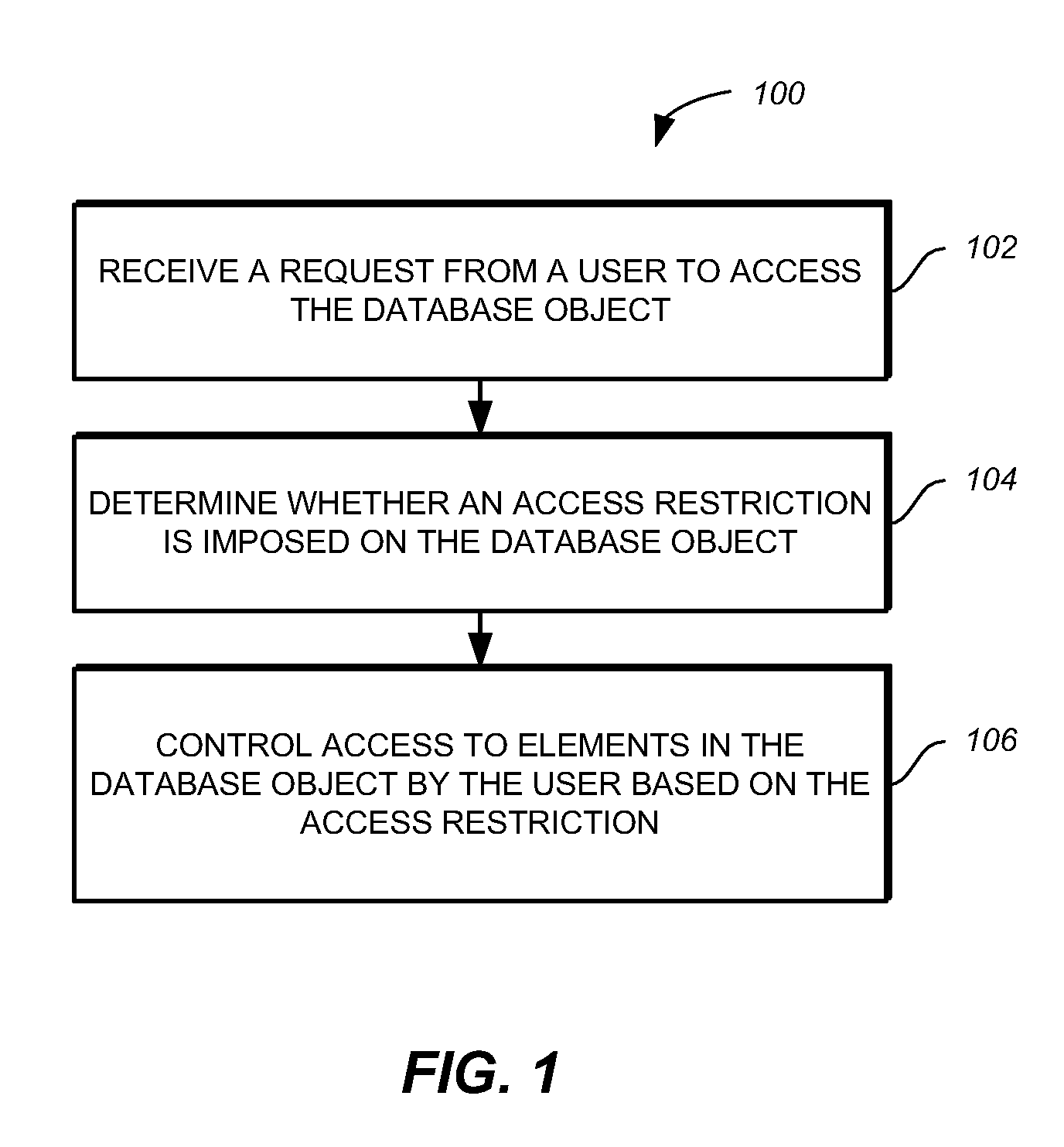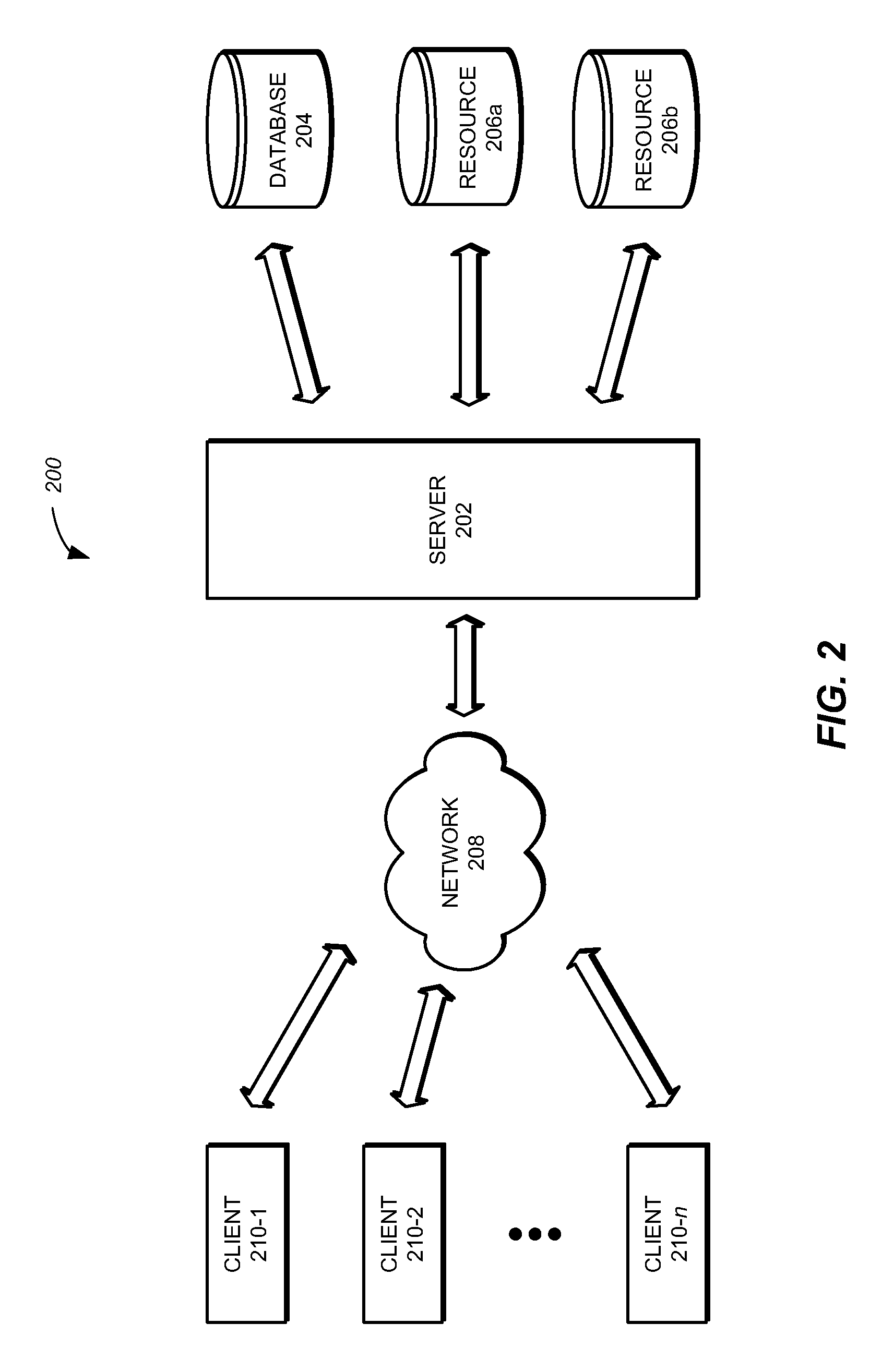Access control for elements in a database object
a database object and access control technology, applied in the field of database management systems, can solve the problems of limiting system limits, difficult to maintain the view, and difficult to route user requests, and achieve the flexibility needed to address current privacy and security concerns
- Summary
- Abstract
- Description
- Claims
- Application Information
AI Technical Summary
Benefits of technology
Problems solved by technology
Method used
Image
Examples
Embodiment Construction
[0025]The present invention relates generally to database systems and more particularly to controlling access to elements in a database object. The following description is presented to enable one of ordinary skill in the art to make and use the invention. Various modifications to the preferred implementations and the generic principles and features described herein will be readily apparent to those skilled in the art. Thus, the present invention is not intended to be limited to the implementations shown, but is to be accorded the widest scope consistent with the principles and features described herein.
[0026]FIG. 1 depicts a process100 for controlling access to elements in a database object. At 102, a request to access the database object is received from a user. A determination is then made at 104 as to whether an access restriction is imposed on the database object. In an embodiment, the access restriction specifies a first user group comprising one or more users to which the acc...
PUM
 Login to View More
Login to View More Abstract
Description
Claims
Application Information
 Login to View More
Login to View More - R&D
- Intellectual Property
- Life Sciences
- Materials
- Tech Scout
- Unparalleled Data Quality
- Higher Quality Content
- 60% Fewer Hallucinations
Browse by: Latest US Patents, China's latest patents, Technical Efficacy Thesaurus, Application Domain, Technology Topic, Popular Technical Reports.
© 2025 PatSnap. All rights reserved.Legal|Privacy policy|Modern Slavery Act Transparency Statement|Sitemap|About US| Contact US: help@patsnap.com



